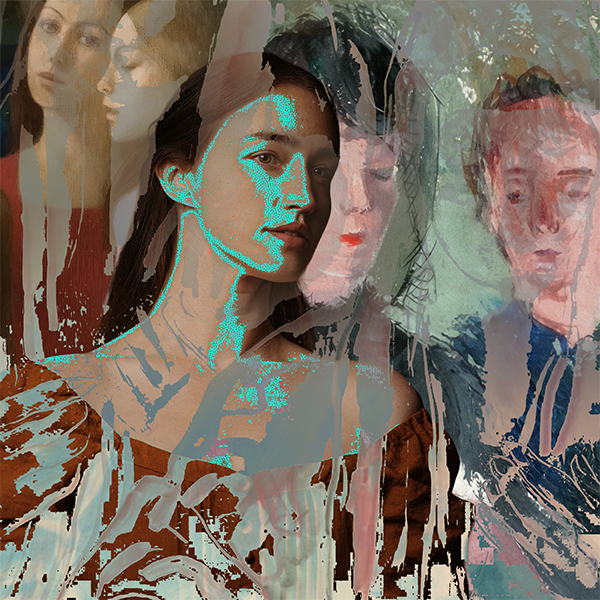Thinking Differently About Rest: What Communities of Color Can Teach the Church
“Oo-rhee gahchi mokyok tahng gah-jah.”
These words were an invitation from my grandmother since I was a young girl. From Korean, these words are translated, “Come, let’s go together to the bathhouse.”
When I was younger, I didn’t grasp the full significance of my grandmother’s words or the context of the bathhouse. Now I know—she was inviting me into holy ground.
As I peeled back the layers of my grandmother’s life, I began to search for places where she took refuge, places she sought to tend to her own social, physical, relational, emotional, and spiritual wounds. Where did she go to find restoration for her soul?
In unearthing the layers of my journey as a woman of color, I began excavating my own culture’s authentic expressions of soul care. And in my research, I found prevailing themes begin to stand out—not only in my culture but amongst other communities of color too.
Soul care experiences within communities of color move beyond a monastic, ascetic, individualized experience and push towards a communal, intergenerational experience. Additionally, soul care from the margins necessitates space for embodied experiences that integrate the mind, body, spirit, and soul in tending to our individual and collective wounds from society.
Communities of color can teach the Church about soul care. Their practices move beyond a monastic, ascetic, individualized experience towards a communal, embodied, intergenerational experience. Share on XAs I dug deeper into my grandmother’s experience, I saw with new eyes the bathhouse as a profound expression of soul care embedded within my culture.
A Communal and Multigenerational Place of Rest
Communal bathing in Korea originated due to the scarcity of resources in a land ravaged by centuries-long wars. Out of necessity, Koreans discovered sustainable methods of efficient and meticulous cleaning for the young and the old—women, men, and children. To the present day, the bathhouse encompasses a gender-separated experience of communal cleansing and detoxification that involves soaking and preparing oneself in very hot water to release toxins, and ddeh-mi-rih, scrubbing off the dead skin cells thoroughly to cleanse the body.
Several months ago, my mom (also a pastor, at a local Korean immigrant congregation) gave me six coupons to the Korean bathhouse. She gifted them to me, saying in Korean, pastor-to-pastor, “Take care of yourself and go.” Her words echoed with remnants of my grandmother’s voice.
I was being asked to join her, along with the generations of women before her, in finding rest for our weary bodies. In my mom’s and preceding generations, the bathhouse had been one of the few spaces of exhale and rest available to Korean women in an oppressive patriarchal culture devastated by years of war and colonization by surrounding countries.
I never thought I would find an intersection between the bathhouse and my understanding of soul care. My theological, educational, and formational framework for soul care over the years had culminated to a monastic, ascetic experience at the monastery or retreat center. It leaned into a westernized, individualistic experience that was more “refined” and defined.
There is a word in Korean, han, that is quite difficult to capture in English. Han tries to express the painful tearing apart of one’s heart due to injustices. It describes both a collective and individual experience of suffering that comes from unjust political and social systems.
Theologian and scholar Grace Ji–Sun Kim articulates Koreans’ understanding that if han isn’t released in a positive way, it can bring destruction, death, and violence into one’s life or community. Han needs to be set free for us to heal and move towards a more whole way of living.
On my usual day set aside for soul care, I took seriously my mom’s invitation and went to the bathhouse. As I entered, walking purposefully into the steaming water and heat, I leaned into my own han before God. The han of the oppression and suffering of my mother’s generation and the generations before her. The han of my own family’s struggle with addiction, brokenness, and dysfunction. The han of invisibility as a Korean American, of being perpetuated as a foreigner or model minority in this country. The han of dealing with the systemic injustices as a person of color, as a woman. The collective han of my people’s history and grief.
I didn’t realize how deeply my bones were aching for an embodied and communal experience. My soul was aching to be with other halmuhnis, unnies, ddals, and ahjummas—grandmothers, sisters, daughters, women—who, like me, were coming to the bathhouse for refuge, for cleansing, and for rest from their own struggles, hurts, and sufferings.
The shared multigenerational space with Korean women allowed me to see God caring for every one of his children. The imago dei of my people was held safely, shining brightly in the arms of God. The hissing, screaming steam sauna safely covered the sound of my tears of lament and grief like Hagar weeping for her son in the wilderness. The wooden, caved silence of the heat room—the jjimjilbang—echoed of God’s gentle whisper to Elijah. My mouth, spirit, and soul quieted before God. The incarnational act of scrubbing away physical toxins in the ddeh-mi-rih birthed a renewed vulnerability and rawness in my embodied expression of faith, evoking memories of our truest form of humanity in Eden. God was detoxifying violence, hurts, wounds—manifested han—in his presence. I was given a wider and further reaching grasp to remove physiological, psychological, spiritual, and mental toxins from my heart, mind, spirit, and soul.
As I watched grandmothers scrub their daughters, moms scrub their young ones, nieces and aunties scrubbing their elders, the embedded act of cleansing brought about a collective relief and release—a washing of feet and the anointing of perfume. The physical labor of both young and old generations scrubbing off dead things from each other spurred a passing on of legacy and hope.
Where Does God Meet You with Rest?
My favorite Psalm penned by David says of God:
You lead me beside still waters … you restore my soul.
Each week, I find myself yearning for the purified waters of my people’s bathhouse. The gurgling, bustling, bubbling Korean baths are a reminder to me of God’s cleansing tears, an embodied renewal of my baptism into faith, an anointing of the legacy of my grandmother, mother, sister, aunties, and the women before me, sharing in the long line of this tradition.
In Mark 6:31, Jesus invites his disciples with these words:
Come away, let’s go together to a quiet place and rest awhile.
What I used to see as an invitation to a mountaintop or monastery, I now see with a new vision from my own cultural lens and upbringing. I hear Jesus extending an invitation to me, “Oo-rhee gahchi mokyok tahng gah-jah.”
When we respond to the Kingdom call to rest, we engage a missional act that points back to the very beginning of creation. God not only embodies a rhythm of rest after work, he commands his children to rest in an empire that condemns it. This command does not come with a denial of lament, grief, and longing, but instead encompasses God’s capacity and desire to tend to our suffering, to wipe every tear from our eyes, and renew our hope as we enter his Sabbath rest.
Rest is an act of resistance to the empire. It is an act of reclamation. It is an act of redemption and renewal to bringing God’s restoration to the world. In first allowing God to tend to our own fractures and woundedness can we then embody bringing forth Kingdom reconciliation and hope on earth.
Rest is an act of resistance to the empire. It is an act of reclamation. It is an act of redemption and renewal to bringing God’s restoration to the world. Share on XA Sacred Invitation
How might God be inviting the church in North America to be learning communal and intergenerational rhythms of rest? Communities of color have much to offer from their own experiences and practices of soul care.
Oftentimes, some of the most familiar things to us—the most ordinary of places and spaces—are an entrance point into the sacred. We each are invited into a sanctuary for our own souls: a set-aside time, a sacred place, a secret place, a refuge—a place where in the intersectionality of our lives and circumstances, the living God ministers to us.
It’s in this sanctuary of the soul where the dismantling of our own han begins, where we deal with the violence, toxins, and death we’ve created or experienced from systemic injustices around us.
It’s in this place we begin to live more fully into our own humanity and into our Kingdom purpose, where we begin to hear the sound of our prophetic voices again.
It’s in this place that we become our true selves—persons made in the image of God, beloved and redeemed.
It’s in this place we are made whole again so that the living Christ, through our embodied wholeness, can bring gospel hope to the world.



